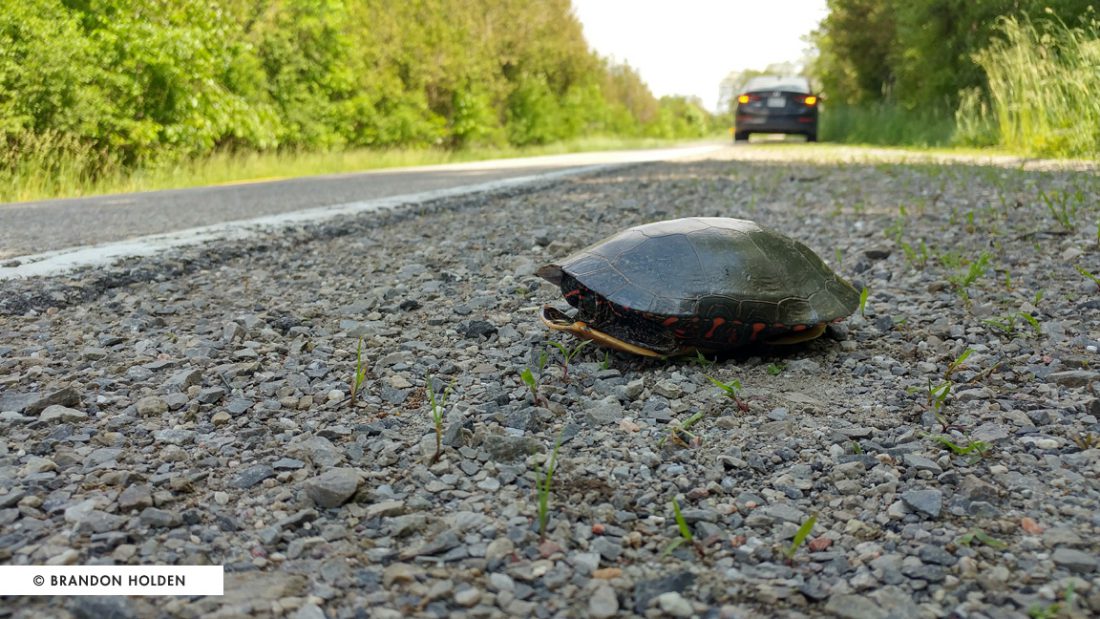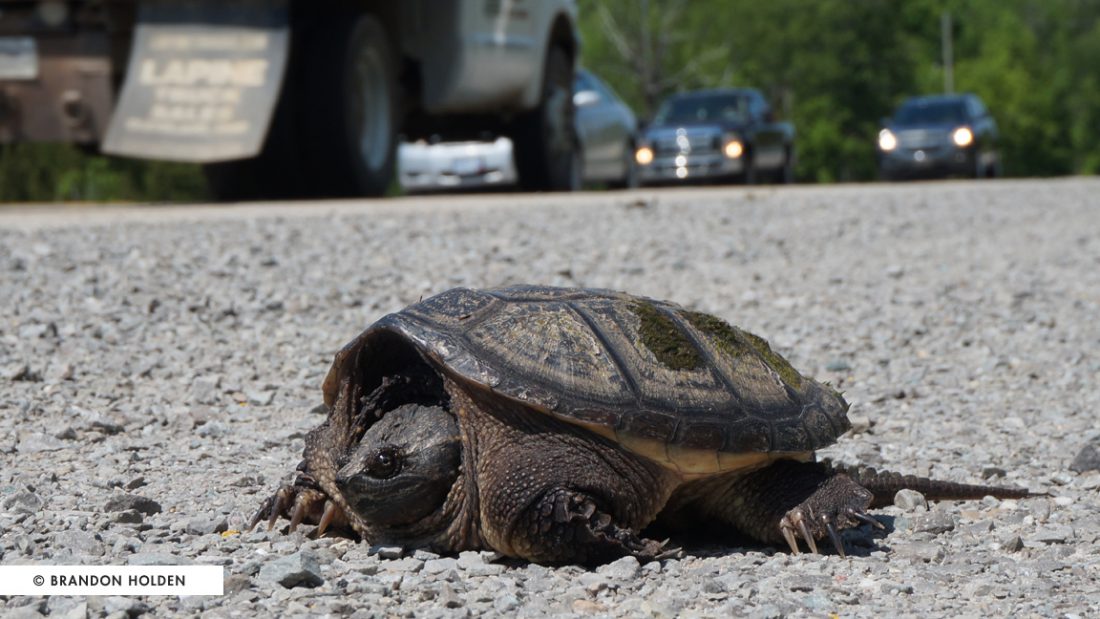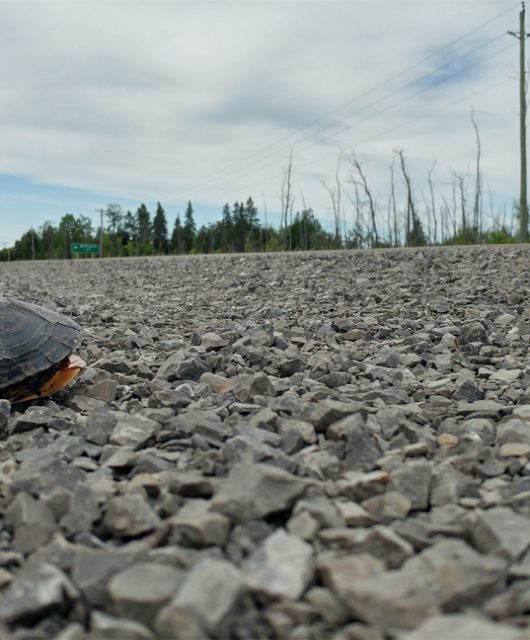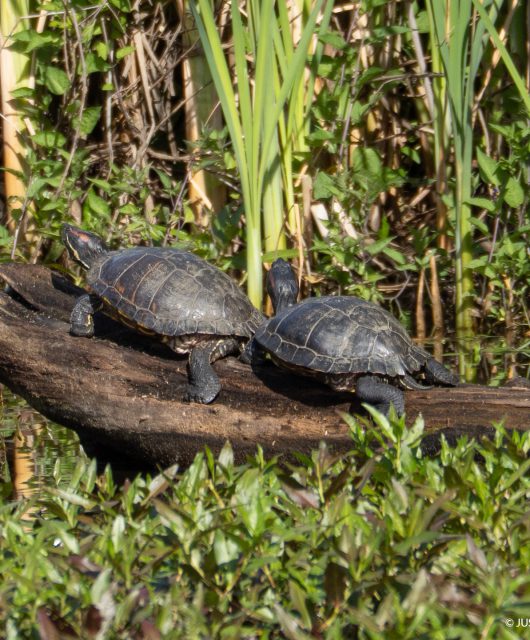The answer to this play-on-words is far from a children’s joke.

Turtles often use a variety of wetlands over the course of the year. They may spend the winter in one wetland, but forage for food in another in the spring, and use a third wetland later in the summer. To get from one wetland to another often means having to cross a busy road. While turtles can sometimes be seen on roads throughout the spring and summer, many are on roads during the month of June, the prime nesting period for turtles. During June, adult females are leaving swamps and marshes to look for places to lay their eggs and are often forced to cross roads looking for a place to lay their eggs; unfortunately in many cases they find themselves face to face with fast moving vehicles only to meet their final demise.

Canadian Wildlife Federation and one of our partners, Scales Nature Park, are conducting surveys for turtles on roads to help identify where turtles are most commonly killed on roads. This information can be used to determine where road mitigation, such as fencing should be installed to keep turtles off roads and reduce future turtle deaths. Fencing that guides turtles and other wildlife to existing culverts keeps turtles off the road but still allows individuals to get where the want to go.
Help the turtles
Seven of eight of Ontario’s turtles are listed as At-Risk and road mortality is a major threat to most of those species. As mentioned, June will see a dramatic influx in turtle numbers along roads, as they are searching for nesting habitats. Everyone can help turtles by keeping a lookout when driving, especially in areas where wetlands are next to roads, or Turtle Crossing signs are posted. By watching the road carefully when driving near wetlands you can avoid turtles on the road. If it is safe to do so you can also help move turtles across the road in the direction they are moving.
If you see a turtle, live or not, you can submit your observations with photos through the Help the Turtles iNaturalist project found at www.inaturalist.ca or available for download on your iPhone or Android.
Juvenile #turtles are small & hard to spot when driving. Keep an eye on the road this season and #HelpTheTurtles make it safely across. pic.twitter.com/HI5FhdLuAK
— Canadian Wildlife (@CWF_FCF) May 31, 2017
For more information about our Help the Turtles project and to find other ways that you can support freshwater turtles, visit HelpTheTurtles.ca.
Author:
![]()
Brittany Quesnel
Brittany is a biodiversity data technician and bat stewardship technician intern at the Canadian Wildlife Federation.




